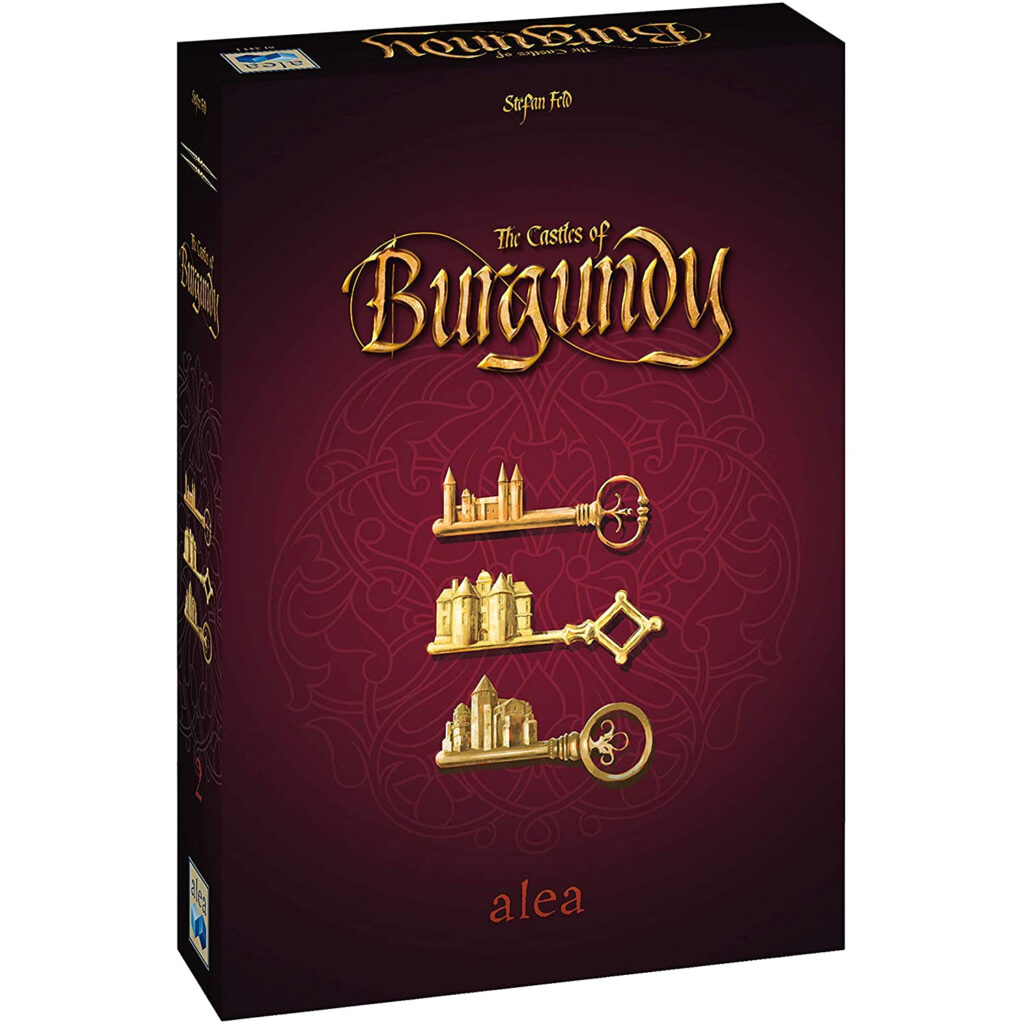This is a series of posts where I play 100 boardgames.

Game: The Castles of Burgundy
Designer: Stefan Feld
Year: 2019
Country: France
Publisher: Alea
The Castles of Burgundy is a classic Eurogame originally published in 2011. It’s a resource management game where each player has a mini-board of their own where they collect resources from the main board, for the purpose of developing the area around their castle. Completing various development tasks grants points. The players have to compete for the resources on the central board and it’s possible to pick up something your co-player desperately needs.
Almost everything you can pick up in the game has a value expressed in the pips of a six-sided die. When it’s your turn, you roll two dice and these are your actions. If you have a six and a three, you can check the board for resources or other elements which need these values.
This system where the dice rolls determine the actions available works really well, both in terms of randomness and strategic depth. You could estimate probabilities and determine risk in an intuitive manner. The dice rolls were made at the beginning of a round, instead of when it was each players’ turn. This meant that players who were not currently executing their round could think about what they wanted to do with the numbers they had.
In many games I’ve played, you decide what you want to do and then roll dice to see what happens. Here the order was reversed. Luck was definitely in play in determining your tactical possibility space but all actions were successful. It felt like this idea could be used in different types of games too, for example to avoid the tedium of combat rounds where your single attack fails.
It took our group a while to learn all the details of the game, particularly because there seemed to be an endless supply of Monasteries you could build to give various bonuses to your play. Each worked differently and you had to figure out a dozen of them during the course of play. Because we learned while we played, a single playthrough took us all evening.
I’ve found that one of my favorite things about boardgames is when they have enough game mechanical richness that playing feels like you’re exploring a design space. You learn and understand as you go, realizing new potential tactics and approaches to victory. While the initial stages of learning rules are painful and awkward, this phase of internalizing the game is fun. Later, it fades away, replaced by mastery as the last unknowns become known.
The Castles of Burgundy definitely had enough complexity for this kind of enjoyment, as the optimum strategies slowly revealed themselves through the interplay of various game elements.